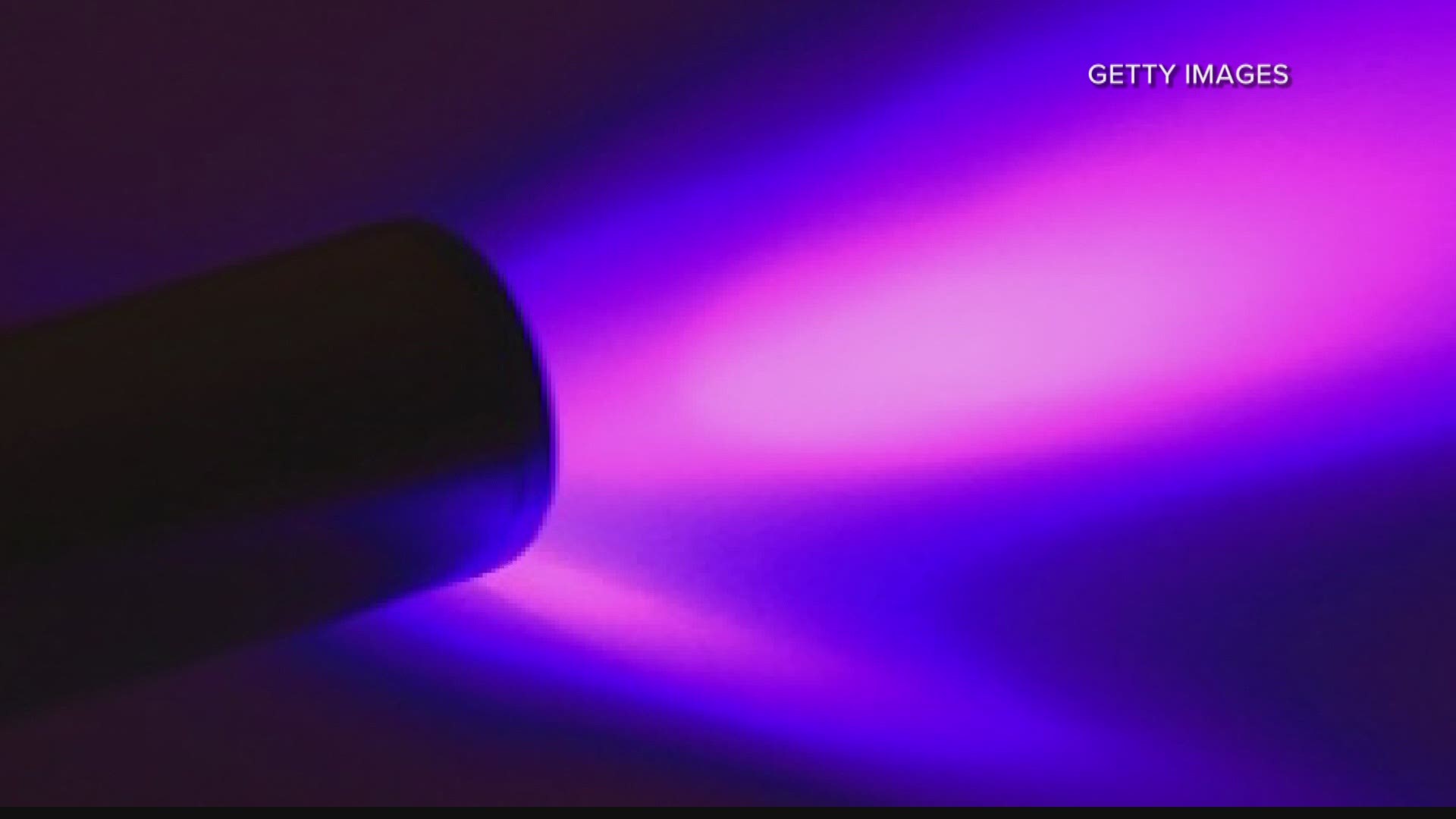QUESTION
"There are ads on TV for UV lights that kill all bacteria and viruses just by waving the light over the surface. Is this true?" asked 13News viewer Mike.
ANSWER
No, it is false that simply waving a UV light over bacteria or viruses will kill them.
SOURCES
- The U.S. Centers for Disease Control and Prevention
- Kim Trautman — vice president at NSF International, an organization that does testing and certification for consumer products and the environment
- Dr. James Malley — a scientist and founding President of the International Ultraviolet Association
THE FACTS
During the pandemic, one of the sanitation methods promoted to destroy the COVID-19 virus from surfaces is using UV light. On April 23, President Donald Trump said in a news conference: “…the whole concept of the light, the way it kills it in one minute - that's pretty powerful." In the same news conference, Acting Under Secretary William Bryan spoke about UV light cutting down the half-life of the COVID-19 virus to just minutes.
Ultraviolet light has indeed been proven to wipe out germs. It destroys the actual DNA of bacteria.
And it's been used for years to disinfect water, hospital surfaces and medical instruments.
But here's the thing. According to the CDC and NSF International, a lot of factors influence how effective UV light is — most importantly its intensity and how long the surface is exposed to that light.
"You have to design it, operate it, and maintain it properly, and you have to use it properly for it to work and the difficulty with a lot of the consumer products is they're not designed properly or they're not used properly," said Dr. James Malley, president of the International Ultraviolet Association.
Kim Trautman is vice president at NSF International. She has more than 30 years of experience in medical device quality systems and international regulatory affairs. She said a big disadvantage for relying on UV light to kill germs is that UV light can be blocked by a lot of things…the very things where germs tend to live.
"So dust, body oils, sitting inside woven fabric where the light can't get to it easily," she said.
Another concern is that UV light can be really dangerous if it touches our skin or eyes.
"In general, we suggest they use something more straightforward: alcohol wipes on your cell phone, for example, until we get to a place where there's a validation system for these products," Malley said.
So we can verify that UV light can kill germs. As for claims that it will kill "all bacteria and viruses just by waving the light over the surface" — our experts say a quick wave of a wand is false.

